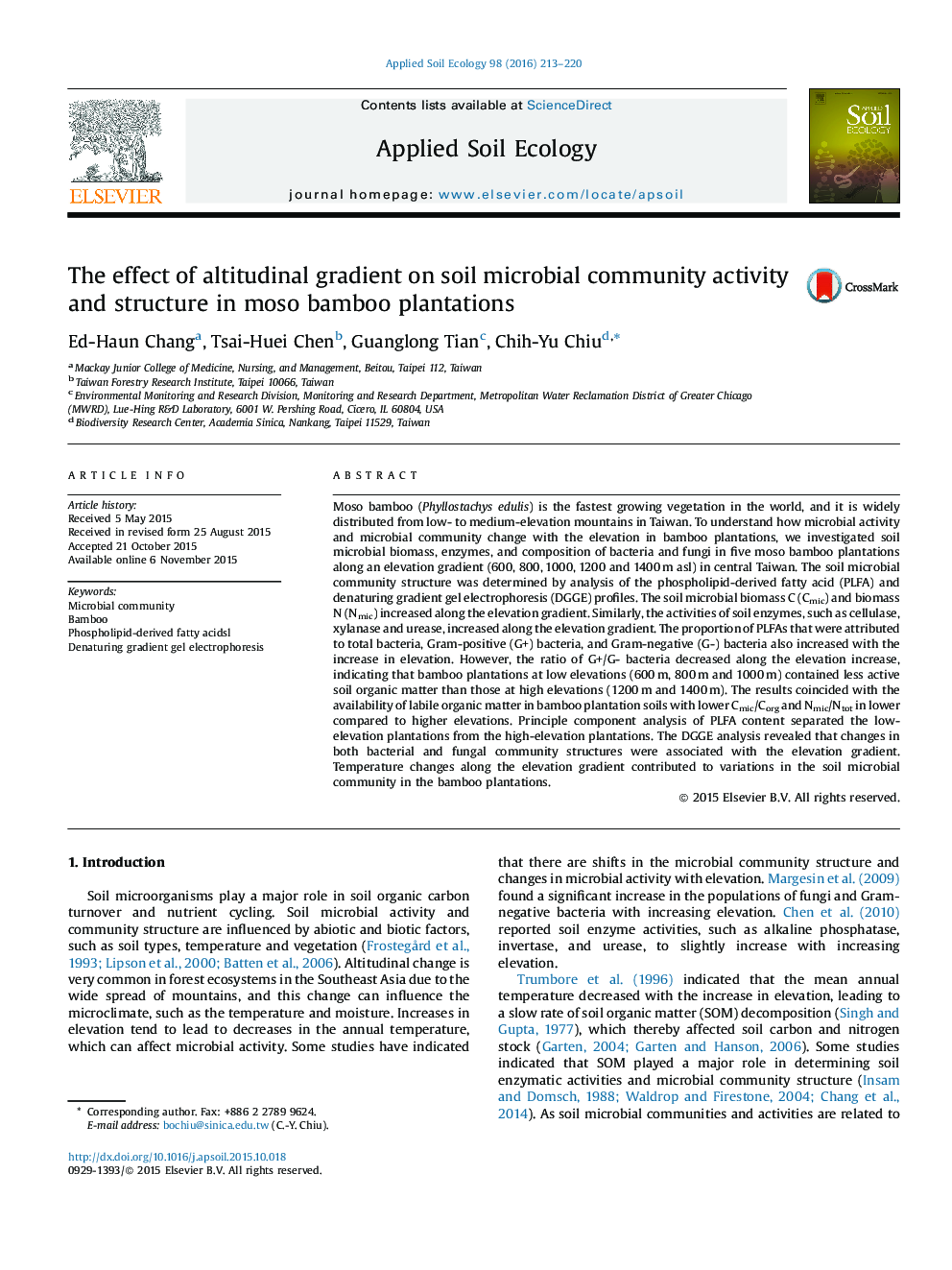| کد مقاله | کد نشریه | سال انتشار | مقاله انگلیسی | نسخه تمام متن |
|---|---|---|---|---|
| 4381873 | 1617785 | 2016 | 8 صفحه PDF | دانلود رایگان |
• Soil microbial biomass, activities and communities change along elevation gradient.
• Labile SOM (Cmic/Corg and Nmic/Ntot) was lower at low relative to high elevation.
• Microbial abundances increased with elevation gradient.
• Bacterial and fungal community structure both associated with elevation gradient.
• Temperature changes along elevation contributed to soil microbial community.
Moso bamboo (Phyllostachys edulis) is the fastest growing vegetation in the world, and it is widely distributed from low- to medium-elevation mountains in Taiwan. To understand how microbial activity and microbial community change with the elevation in bamboo plantations, we investigated soil microbial biomass, enzymes, and composition of bacteria and fungi in five moso bamboo plantations along an elevation gradient (600, 800, 1000, 1200 and 1400 m asl) in central Taiwan. The soil microbial community structure was determined by analysis of the phospholipid-derived fatty acid (PLFA) and denaturing gradient gel electrophoresis (DGGE) profiles. The soil microbial biomass C (Cmic) and biomass N (Nmic) increased along the elevation gradient. Similarly, the activities of soil enzymes, such as cellulase, xylanase and urease, increased along the elevation gradient. The proportion of PLFAs that were attributed to total bacteria, Gram-positive (G+) bacteria, and Gram-negative (G-) bacteria also increased with the increase in elevation. However, the ratio of G+/G- bacteria decreased along the elevation increase, indicating that bamboo plantations at low elevations (600 m, 800 m and 1000 m) contained less active soil organic matter than those at high elevations (1200 m and 1400 m). The results coincided with the availability of labile organic matter in bamboo plantation soils with lower Cmic/Corg and Nmic/Ntot in lower compared to higher elevations. Principle component analysis of PLFA content separated the low-elevation plantations from the high-elevation plantations. The DGGE analysis revealed that changes in both bacterial and fungal community structures were associated with the elevation gradient. Temperature changes along the elevation gradient contributed to variations in the soil microbial community in the bamboo plantations.
Figure optionsDownload as PowerPoint slide
Journal: Applied Soil Ecology - Volume 98, February 2016, Pages 213–220
